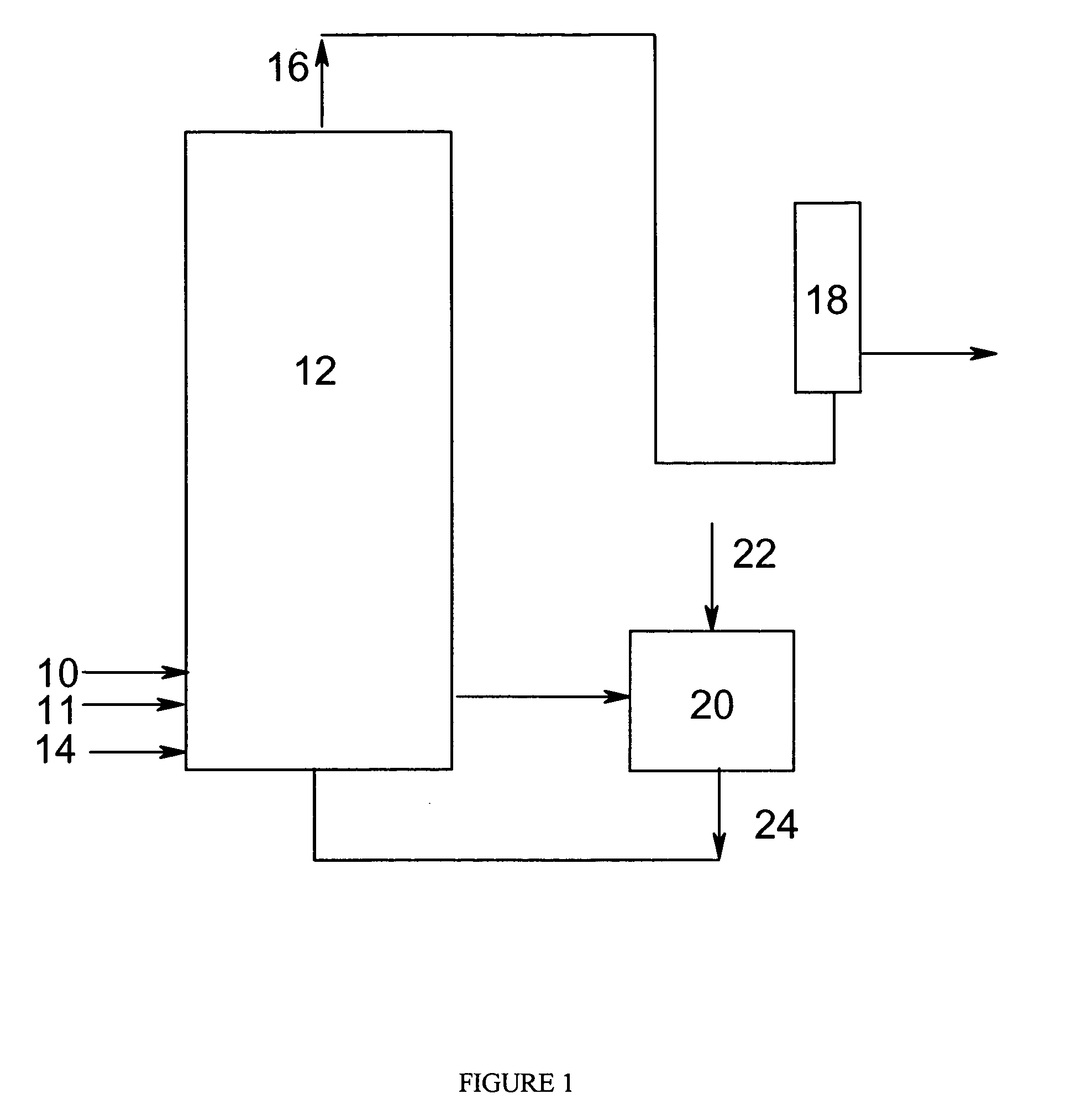Liquid phase oxidation of P-xylene to terephthalic acid in the presence of a catalyst system containing nickel, manganese, and bromine atoms
a technology of terephthalic acid and catalyst system, which is applied in the direction of organic compound/hydride/coordination complex catalyst, physical/chemical process catalyst, metal/metal-oxide/metal-hydroxide catalyst, etc., can solve the problem of permanent loss of solvent, loss of solvent, and the product of terephthalic acid is not very soluble in solven
- Summary
- Abstract
- Description
- Claims
- Application Information
AI Technical Summary
Benefits of technology
Problems solved by technology
Method used
Image
Examples
examples 1-7
[0040] The following procedure was used as a representative procedure for examples 1-7, with variations noted on the table.
[0041] Each of the catalyst solutions set forth in the Table, containing 80 g of a 96% aqueous acetic acid (92% aqueous acetic acid in examples 7) and the noted concentrations of nickel (as Ni(OAc)2*4H2O), manganese (as Mn(OAc)2*4H2O) and bromine (as HBr), were charged to a 300-mL titanium autoclave equipped with a high pressure condenser and an Isco pump. Once the autoclave was pressurize up to 100 psig with nitrogen, the contents were heated to about 160° C., or 163° C. in the case of examples 7, in a closed system (i.e., with no gas flow). Thereafter, the pressure was increased by an additional 240 psi-250 psi using a 50 / 50 vol % mix of nitrogen and air at a flow rate of about 500 sccm each. Once the autoclave was pressurized to about 340 to 350 psig, the pressure was further increased up to 700 psig using only nitrogen.
[0042] At the target pressure, a flow...
examples 8-16
[0047] Examples 8-16 illustrate the effect of stoichiometric molar ratios of the elements nickel, manganese, and bromine on solvent burn and intermediate production, in particular 4-CBA.
[0048] Data for Examples Comp 8, Comp 9, 10, Comp 11, Comp 12, and 13 are predicted values obtained from models derived from experiments performed in the same manner as in examples 1-7 using 96% aqueous acetic acid. Results for Examples Comp 14, Comp 15 and 16 are values obtained by an average of 3-4 data points generated in the same manner as in Examples 1 through 7, except that these examples were prepared using 88 wt. % aqueous acetic acid.
TABLE 24-4-MolarCBACBANiMnBrRatioTempCOxaCOx / TPAd(s)b(t)cEx.ppmppmppmNi:Mn:Br° C.Yield(vol %)mol / molppmppmComp 892086025001:1:21571.50.151.01N / A44200Comp 9175086025001.9:1:21572.40.210.89N / A54800101750250020000.64:1:0.551573.80.150.40N / A7600Comp85079023001:1:21551.50.161.07N / A4850011Comp210079023001.9:1:21552.60.160.62N / A6450012132100250023000.77:1:0.631553.7...
PUM
| Property | Measurement | Unit |
|---|---|---|
| Temperature | aaaaa | aaaaa |
| Temperature | aaaaa | aaaaa |
| Temperature | aaaaa | aaaaa |
Abstract
Description
Claims
Application Information
 Login to View More
Login to View More - R&D
- Intellectual Property
- Life Sciences
- Materials
- Tech Scout
- Unparalleled Data Quality
- Higher Quality Content
- 60% Fewer Hallucinations
Browse by: Latest US Patents, China's latest patents, Technical Efficacy Thesaurus, Application Domain, Technology Topic, Popular Technical Reports.
© 2025 PatSnap. All rights reserved.Legal|Privacy policy|Modern Slavery Act Transparency Statement|Sitemap|About US| Contact US: help@patsnap.com

